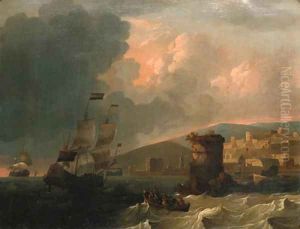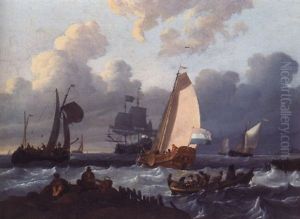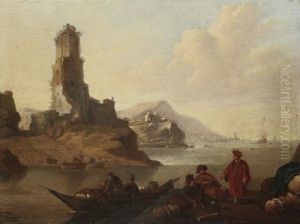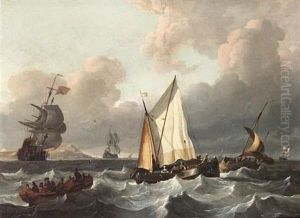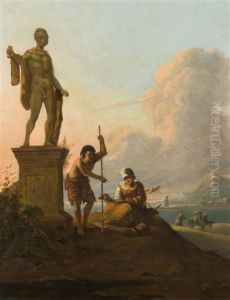Wigerus Vitringa Paintings
Wigerus Vitringa, also known as Wigarus Vitringa the Elder, was a Dutch painter and art theorist born in Leeuwarden in 1657. He was a versatile artist known for his maritime paintings, including sea battles and calm seascapes, as well as for his writings on art. Vitringa's work reflects the rich tradition of Dutch maritime painting that was prevalent during the Golden Age of Dutch art, a period that saw a great flourishing of artistic talent and production in the Netherlands.
Vitringa's father was a professor of theology, which provided a scholarly background that influenced Wigerus's approach to art. Despite this academic environment, Vitringa chose to pursue a career in painting. He studied under the marine painter Ludolf Bakhuizen, a well-respected artist of the time renowned for his dramatic seascapes. Under Bakhuizen's guidance, Vitringa honed his skills and developed a keen eye for the interplay of light and water, which would become a hallmark of his own work.
After his apprenticeship, Vitringa traveled extensively, which was common for artists of his time as a means of broadening their experience and finding patrons. He worked in Amsterdam for a while and then moved to various cities in the northern Netherlands. In 1681, he became a member of the painter's guild in Kampen, indicating his recognition as a professional artist.
Vitringa's paintings often depicted Dutch naval power, a subject of great national pride during the 17th century when the Dutch Republic was a major maritime force. His seascapes are characterized by meticulous detail, careful composition, and a naturalistic representation of the sea and sky. While less known than some of his contemporaries, Vitringa's work contributes to the collective legacy of Dutch maritime painting and offers a window into the naval history and cultural identity of the Netherlands during his lifetime.
In addition to his painting, Vitringa wrote about art theory, although his writings were not as widely known or influential as his paintings. He passed away in 1725. Today, Vitringa's works can be found in various museum collections, serving as a testament to his skill and dedication to the craft of painting.





